 Palestinians sat amid the rubble of their destroyed home in Jabalia after Israeli troops pulled out of the northern Gaza Strip on Monday. (Abid Katib/Getty Images)
Palestinians sat amid the rubble of their destroyed home in Jabalia after Israeli troops pulled out of the northern Gaza Strip on Monday. (Abid Katib/Getty Images)GAZA CITY, Palestine: Mar. 4th. (NY Times) — As israel withdrew its forces from the northern Gaza Strip after a two-day assault on Hamas militants on Monday and Palestinians emerged from their houses to inspect the damage, Hamas leaders seemed to be following the playbook of their Lebanese ally, Hezbollah, in its 2006 war with Israel. Fawzi Barhoum, a spokesman for Hamas in Gaza, said that Hamas has “gone from the stone to the rocket. What we learned from Hezbollah,” he said, “is that resistance is a choice that can work.”
The clearest example of echoing Hezbollah came on Monday when thousands attended a so-called victory rally , and Mahmoud Zahar, an influential Hamas leader, briefly came out of hiding to tell the celebrants that his organization would rebuild any house that had been damaged by the Israeli strikes. Holding up his group as the source of reconstruction as well as resistance is precisely the message that brought Hassan Nasrallah, the Hezbollah leader, local and regional acclaim when his organization faced down Israeli attacks in the summer of 2006 through rocket barrages on Israel. The latest surge in hostilities between Israel and militants in the Gaza Strip left 116 Palestinians dead, according to Dr. Moawiya Hassanain of the Palestinian Health Ministry in Gaza, the deadliest fighting in Gaza in a year. Two Israeli soldiers were killed in the fighting in northern Gaza on Saturday, and one Israeli civilian was killed last Wednesday by rocket fire in the border town of Sderot.
But more than 200 rockets have been fired at Israel since Wednesday, according to Israeli military officials, including at least 21 longer-range Katyusha-style rockets that are manufactured outside Gaza and brought into the strip — another illustration of what Palestinians and Israelis see as the growing similarity between Hamas and Hezbollah. “We are very concerned that the role model for Hamas in Gaza is the Lebanese Hezbollah,” said Mark Regev, a spokesman for Israel’s prime minister, Ehud Olmert, when asked about parallels between this conflict and the one with Hezbollah. “I have no doubt that the people who built Hezbollah’s military machine are now building the military machine of Hamas,” Mr. Regev added. He named Iran, where Israeli security officials say the longer-range rockets used by both Hezbollah and Hamas were made. Israeli officials say that Hezbollah is not only a model for Hamas, but also provides it with training and logistical support. They add that Hamas has also adopted other Hezbollah tactics, operating out of civilian areas and in some cases storing weapons in homes, creating similar dilemmas for the army that it faced in its war in Lebanon in 2006. Soon after the forces left northern Gaza on Monday, two more of the imported rockets that Israelis refer to as Grads struck Ashkelon, a large Israeli coastal city about 10 miles north of the strip. One hit an apartment block causing damage but no serious injuries.
Hamas, the militant Islamic organization that controls Gaza, has claimed responsibility for most of the rocket fire. Hamas took over Gaza last June after routing forces loyal to President Mahmoud Abbas, of Fatah. Mr. Abbas, who is now based in the West Bank, suspended peace talks with Israel as the death toll rose in Gaza, and called on all sides to agree to a cease-fire and to allow him to act as a mediator, a day before Secretary of State Condoleza was expected to arrive in the area for talks. There was a second day of unrest in the West Bank on Monday, with Palestinians protesting the Israeli actions in Gaza and throwing stones at soldiers and Israeli cars in various locations. An Israeli settler shot dead a Palestinian youth, 17, on a road west of Ramallah. According to Israel Radio, the settler said he had gone out for a walk and was confronted by a group of Palestinians, some masked, who threw stones. In an apparent bid to remain relevant in Gaza, and in an echo of the actions of the Lebanese government in southern Beirut last summer, Mr. Abbas, who is now based in the West Bank, also instructed his government on Monday to allocate $5 million to compensate Gaza residents whose properties were damaged in the Israeli campaign. Israel says its ground and air forces have only been targeting rocket squads and weapons storage and production facilities in Gaza. Israel’s army chief of staff, Lt. Gen. Gabi Ashkenazi, and head of military intelligence, Maj. Gen. Amos Yadlin, both described 90 percent of those killed in Gaza in the last few days as terrorists. 
But that figure is challenged by medical officials in Gaza, who say about half of those killed were civilians, including several young children. The Israeli human rights organization Btselem also issued a statement on Monday saying that by its count at least 54 of the dead did not take part in the hostilities. Mr. Olmert was quoted as telling the Parliament’s Foreign Affairs and Defense Committee on Monday that the recent military campaign, that started with concerted air strikes on Wednesday and the ground incursion early Saturday, was “not a one-time event. We are in the midst of a combat action,” he said, adding that “the objective is reducing the rocket fire and weakening Hamas.” On Monday evening, the Israeli air force struck another rocket-launching squad and the wagon in which they were transporting rockets in northern Gaza, an Army spokeswoman said. Palestinian officials said one militant was killed. Israel is mulling a much broader and longer ground operation in Gaza, the defense minister, Ehud Baruk, said in recent days. But both Israeli government and military officials say they are wary of such a campaign because of the inevitably high cost in lives on both sides and uncertainty about what might be achieved.
In terms of strength, Hamas is still far from Hezbollah. But if Israel does not act, Mr. Regev said, it will wake up one day to a much more dangerous situation in the south with a large part of the Israeli population within range of Hamas rocket fire. In the Gaza town of Jabalia, the focus of the Israeli ground operation, residents emerged from their houses to inspect the destruction left by the Israeli tanks and to bury more of the dead. Ahmad Darabeh, 37, a teacher and father of six, described how soldiers blew open the door of his house without warning before dawn on Saturday and took up sniper positions inside. The whole family was confined to one room, only allowed out to visit the bathroom once every 10 hours, Mr. Darabeh said. Mr. Darabeh said that one of his female relatives, Nihad Daher, 22, who lives nearby, was killed on Saturday by shrapnel when an Israeli Apache helicopter fired a missile at an armed group somewhere outside the house. Mr. Darabeh said he was impressed by the organization of the members of the Qassam Brigades, the military wing of Hamas. “It was striking to see their performance this time,” he said, adding that if the Israeli ground forces had not been backed up from the air, “Hamas could have beaten them.” The Qassam Brigades say that 37 of its members were killed since Wednesday, and other militant groups say they lost another 15. Many Palestinians in Gaza also expressed reservations about the Hamas celebrations, given the number of people who have died. Sitting outside her partially destroyed house in Jabalia, Aisha Abd Rabbo, 85, said she did not care about Mr. Zahar’s offer of compensation. “All I want is the return of those who were killed,” she said.
by Taghreed El-Khodary and Isabel Kershner. Steven Erlanger contributed from Jerusalem.
+++++++++++++++++++++++++++++++++++++++++++++++++++
Disclaimer
No responsibility or liability shall attach itself to either myself or to the blogspot ‘Mozlink’ for any or all of the articles/images placed here. The placing of an article does not necessarily imply that I agree or accept the contents of the article as being necessarily factual in theology, dogma or otherwise.
Mozlink



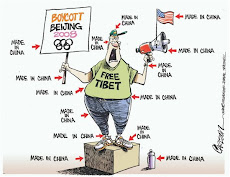
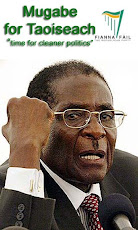












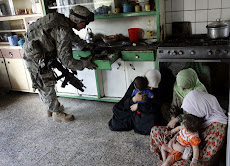






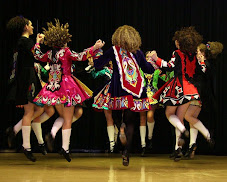
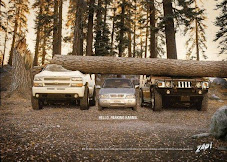



























No comments:
Post a Comment